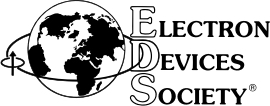Circuits on Cellulose: From Transistors to LEDs, from Displays to Microfluidics on Paper Abstract
The drive to improve the performance and reduce the cost of electronic, photonic and fluidic devices is starting to focus on the use of materials that are exotic for these applications but actually readily available in other fields. In this talk the use of paper as a substrate will be reviewed for a variety of applications, including transistors, light emitting diodes, displays, microfluidics. Paper is a very attractive material for many device applications: very low cost, available in almost any size, versatile surface finishes, portable and flexible. From an environmental point of view, paper is a renewable resource and is readily disposable (incineration, biodegradable). Applications of paper-based electronics currently being considered or investigated include biochips, sensors, communication circuits, batteries, smart packaging, displays. The potential advantages of paper-based devices are in many cases very compelling. For example, lab-on-chip devices fabricated on paper for bio/medical applications frequently use the capillary properties of paper to operate without the need of external power sources, greatly simplifying the design and reducing the cost. Examples of paper-based devices will be discussed.







